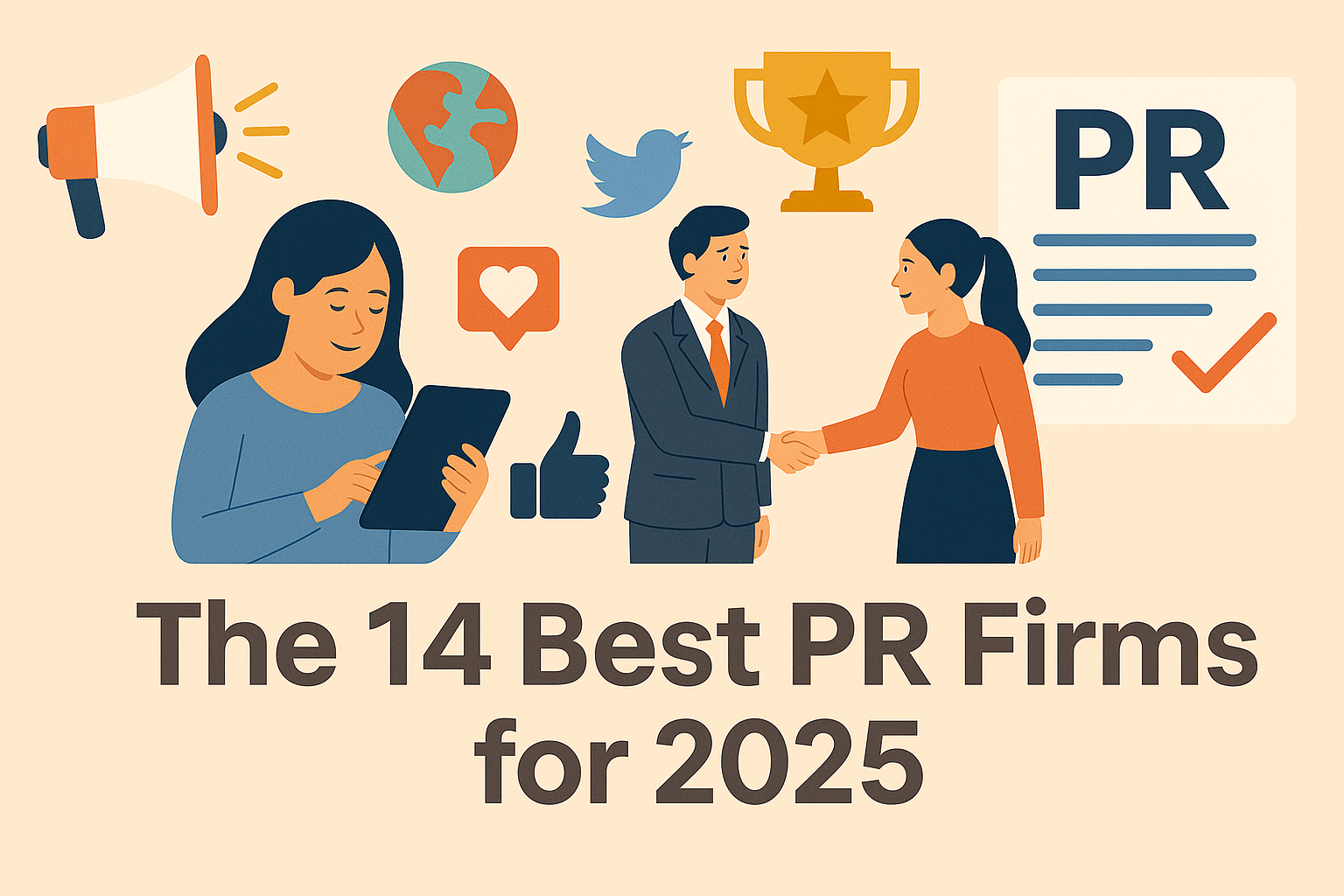Want to know the secret behind the world’s most iconic brands? It’s called share of voice—and if you wield it effectively, your brand can join their ranks.
In a world where attention is currency, share of voice is a crucial concept to understand and master. But what does that term actually mean?
In essence, share of voice refers to the share of your market that your brand owns. In the pre-digital era, this meant the share of advertising in a market that your brand owned as compared to your competitors’.
Take a global, well-known brand like Kleenex. They have a massive share of voice (sometimes referred to online as “SOV”). Or consider Nike. Also a huge share of voice.
Now that we’re in the digital era, the definition of share of voice has expanded to include everything from digital PR, to digital advertising, to social media mentions, to website traffic—in other words, every form of measurable brand awareness in your particular market, whether that’s an industry or a geographical region.
So, how do you go about measuring your share of voice? And, once that’s done, how do you increase it?
Here’s our guide.
What Is Share of Voice? Why Does It Matter?
Share of voice matters because it’s a measure of how many people know, or are aware of, your brand.
Therefore, it’s one of the best ways to see where your brand currently stands in the market. Once you know where you are, it’s much easier to figure out how to get where you want to be.
To use the above examples again, take Kleenex. Their share of voice is so overwhelming that many of us use their brand name to refer to the product they sell, even if the product is made by a competitor, like Puffs.
Before digital marketing, when brands were using print, radio, and TV advertising, share of voice and share of voice marketing were important because they would influence which brand a customer reached for when they were out shopping, like in a grocery store, looking at shelf after shelf of the same product.
It influenced which brand a customer might go out of their way to ask for when they were at a department store or hardware store.
It influenced which car dealership a customer would choose to visit first, or which real estate agency they’d call when it was time to shop for a new home.
Today, in the digital era, share of voice has that same influence—and then some. The digital landscape has put brands in a position of fighting for fractions of customer attention. Share of voice now has the power to make a difference in whether or not a customer will scroll right past your ad on Instagram or Facebook.
This is why share of voice matters now more than ever before: Because brands are competing with each other to grab even two seconds of a customer’s attention. And they’re not just competing with others in their market or industry. They’re competing with every other brand that’s represented on a customer’s social media feed or on the Google search results page they see.
Without a significant share of voice, your brand won’t be able to break through the online noise and reach new customers.
Practically, knowing your share of voice will tell you things like:
- Which platforms are doing well and which ones can be improved on
- How well a specific digital campaign performed
- Your ROI from a particular PR campaign
- Which advertising efforts are working and which aren’t
Now that we know why share of voice matters, let’s look at how you can begin calculating your share of voice.
Measuring the Impact: Analyzing Share of Voice
When you start thinking about all the pieces of digital data that go into your share of voice, like online mentions, PPC ads, and B2B SEO, it can feel daunting trying to figure out how all of that fits together to create your share of voice metric.
But it’s actually not as hard as it seems.
There’s a formula.
The basic equation to use to calculate share of voice is:
(Your brand’s advertising / The total advertising in the market) x 100 = your share of voice
So you can see how, as long as you have the right tools, you can actually figure this out. Some tools out there even offer explicit “share of voice calculators.” In the PR world, tools like Cision and Meltwater can be helpful.
Now, let’s look at what tools you need and how you can calculate the share of voice for your PR, social media, PPC, and organic search.
To Calculate Your PR Share of Voice
If you’re not using a PR analytics tool like Cision or Meltwater, it can be challenging to get an exact calculation of your share of voice.
However, a good indicator of whether or not your share of voice improved is to check your social media mentions and determine your share of voice that way. This will tell you how well your campaign did.
In order to calculate this, you’ll need to be using some kind of social media listening tool, like Hootsuite or Brandwatch Analytics. It’s possible to collect these social media metrics manually, but the process will be cumbersome.
The calculation for social media share of voice will look like this:
(Your brand’s mentions / total industry mentions) x 100 = social media share of voice
Here’s an example using hashtags:
Let’s say you sell coffee.
“Industry mentions” would be the number of times #coffee was used on a particular platform in a given time period. Let’s say that number is 3,000.
“Your brand’s mentions” would, of course, be your branded hashtag—#coffeebrand. If that number is 1,500, this is what your equation would look like:
(1,500 / 3,000) x 100 = 50
So, your brand’s share of voice is 50 percent.
The basic equation stays the same whether you’re calculating share of voice for organic search or PPC.
To Calculate Organic Search Share of Voice:
This is much easier to do with an SEO tool, like Sycara or Pi Datametrics.
What you’ll need to do is select the keywords you’re interested in researching for your share of voice. This will tell you where your brand stands in comparison to your competitors when it comes to search engine result pages (SERPs).
Using the previous coffee example, we could choose the keyword “organic coffee” (although, especially if you’re using a tool, you’ll want to choose 3-5 keywords to identify share of voice when you do this).
Once you have your keyword(s), you need to identify your key competitors. Keep the list small, starting with about three or so of your closest competitors.
Then, you’ll record the rankings for each brand and each keyword. Make sure you have a spreadsheet ready to hold all this data if you’re not using an SEO tool to do this for you.
So, you’d search “organic coffee” and see which brands came up in the first 20 results. Then, you’ll record each ranking for each brand—meaning that if X brand was #3 in the search results for “organic coffee,” you’d record that in your spreadsheet. Y brand might be #7, while your brand is #8.
Now you’ll have to do a bit of research. You’ll need average click-through-rates (CTRs) for each keyword you’re using. There are no industry-standard CTRs per keyword, but you can find good ones to use from various studies. Moz, for example, suggests these.
Once you’ve got the standard CTR information ready, you’ll add up the standard CTR for every position that your site has earned.
So, if one of your blog posts ranked #5 and your product page ranked #12, you’d add up the CTRs for those two positions. That would be 6.1 and 1.5, so the result would be 7.6.
That means, for this example, your share of voice is 7.6%.
To Calculate Your Brand’s Share of Voice for PPC:
Calculating your brand’s share of voice for PPC is quite simple if you have a Google AdWords account. In AdWords, share of voice is referred to as “impression share,” and it’s defined by Google as the percentage of impressions your ads actually get, as compared to the number they could get.
Their share of voice equation looks like this:
Impressions / total eligible impressions = impression share
To see your brand’s impression share, you’ll log into AdWords, click on Campaigns, and then choose Modify Columns. Click on Competitive Metrics, and from there, you’ll be able to add Impression Share to your display.
Increasing Your Brand’s Share of Voice
Here are a few ways to increase your brand’s share of voice:
Digital PR
One of the most effective ways to increase your brand’s share of voice is through PR.
By getting your brand mentioned in respected outlets like trade publications, magazines, journals, newspapers, and leading blogs, you’ll increase the number of people who are aware of and talking about your brand.
And every time PR mentions are shared, your share of voice improves. The more people see your brand, the more people will talk about it, and as you increase your PR efforts, that growth will continue—and that leads to better share of voice marketing.
Another important result of B2B PR is that it can increase your organic traffic. When people see your brand’s name in the press, they’re more likely to type your brand’s name directly into the search bar.
You can calculate the share of voice for your PR efforts with tools like Cision. These same tools can even calculate your competitors’ share of voice, which can also be helpful in establishing where your brand is currently to get you to where you want to be.
Improve Your Site’s SEO
Improving your SEO strategy can help increase your share of voice, as it makes it easier for users to find your content.
When you focus on using relevant keywords—keywords that your customers are using to search for products, services, and information in your industry—you’ll not only improve your SEO ranking, you’ll show up higher in your customers’ search results, increasing your brand awareness and site traffic.
Get More Active on Social Media
Engage with your followers regularly and shake up your content across your social media channels. Try posting questions, joining in trending conversations, or asking users to post their own content—user-generated content, or UGC—using a branded hashtag.
UGC can be a highly effective way to increase your share of voice because it means people outside of your company are talking about your brand. Their followers and connections will see their UGC about your brand, and they may even engage in the conversation.
Have a plan in place to amplify UGC by increasing your social media engagement. Repost the content, crediting the original creators. Not only will this increase your social media presence, it can even inspire future social media campaigns and create opportunities for influencer marketing or brand partnerships.
Publish Your Own Opinion Pieces and Articles
CMOs and other C-level executives can raise their brand’s reputation and status by sharing their own insights through columns in industry magazines, websites, or on their brand’s own blog.
By publishing valuable content regularly, you’ll become a thought leader in your industry, naturally increasing your brand awareness and share of voice. Write about the latest industry trends or highlight problems that your brand can solve. You can even zoom out and discuss more general business topics, including company culture, generational workforce differences, or sustainability.
Publishing content on your own will also benefit your brand’s PR efforts. Becoming a reputable source will serve you well when journalists or bloggers need commentary from an industry expert.
Become the Loudest Voice in the (Digital) Room
Share of voice marketing can be a powerful metric to help guide your PR efforts and digital marketing campaigns.
But there’s one thing to remember: Share of voice measurements only track your number of mentions online—not the quality of those mentions. If you’re getting mentioned frequently in small blogs with few readers, that’s not going to propel your brand to the top of the Google search results page. Similarly, if you’re getting mentioned everywhere because of a crisis or a scandal, your share of voice may be huge, but it won’t be great for your brand.
Monitoring tools can help to measure your brand’s sentiment online, as can social listening and customer feedback. Find ways to build sentiment analysis into your marketing strategy to ensure your share of voice is trending in the right direction.
Improving your share of voice also requires constant effort and adjustments to ensure you’re making the most of your content and getting your brand’s message across. Regularly measure your brand’s share of voice and have plans in place to reach your goals.
If you’re interested in increasing your brand’s share of voice and share of voice marketing, digital PR may be exactly what you need. Get in touch—we’d love to talk!





